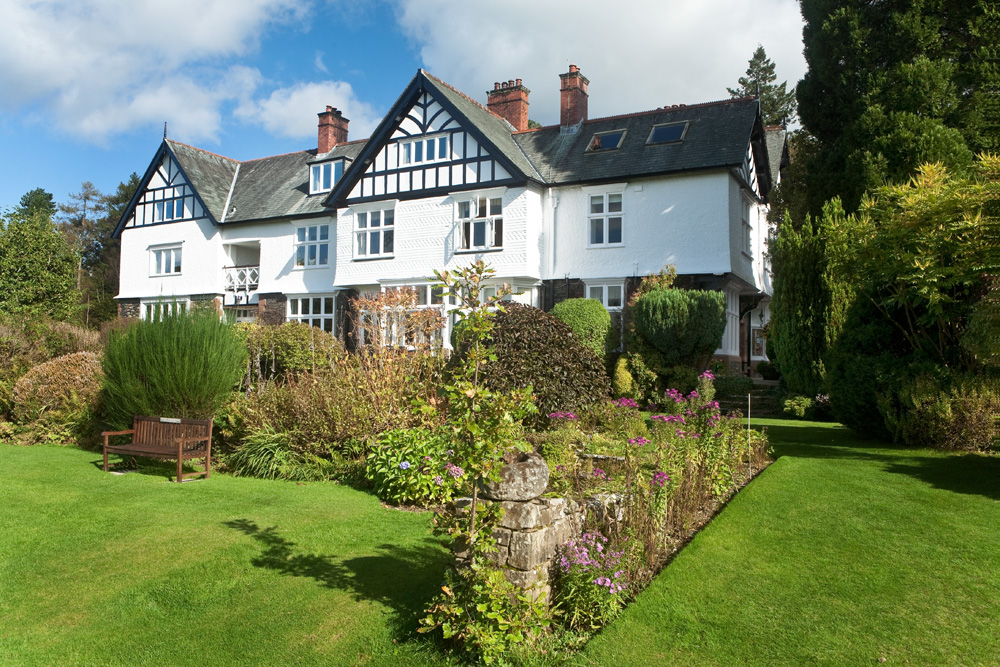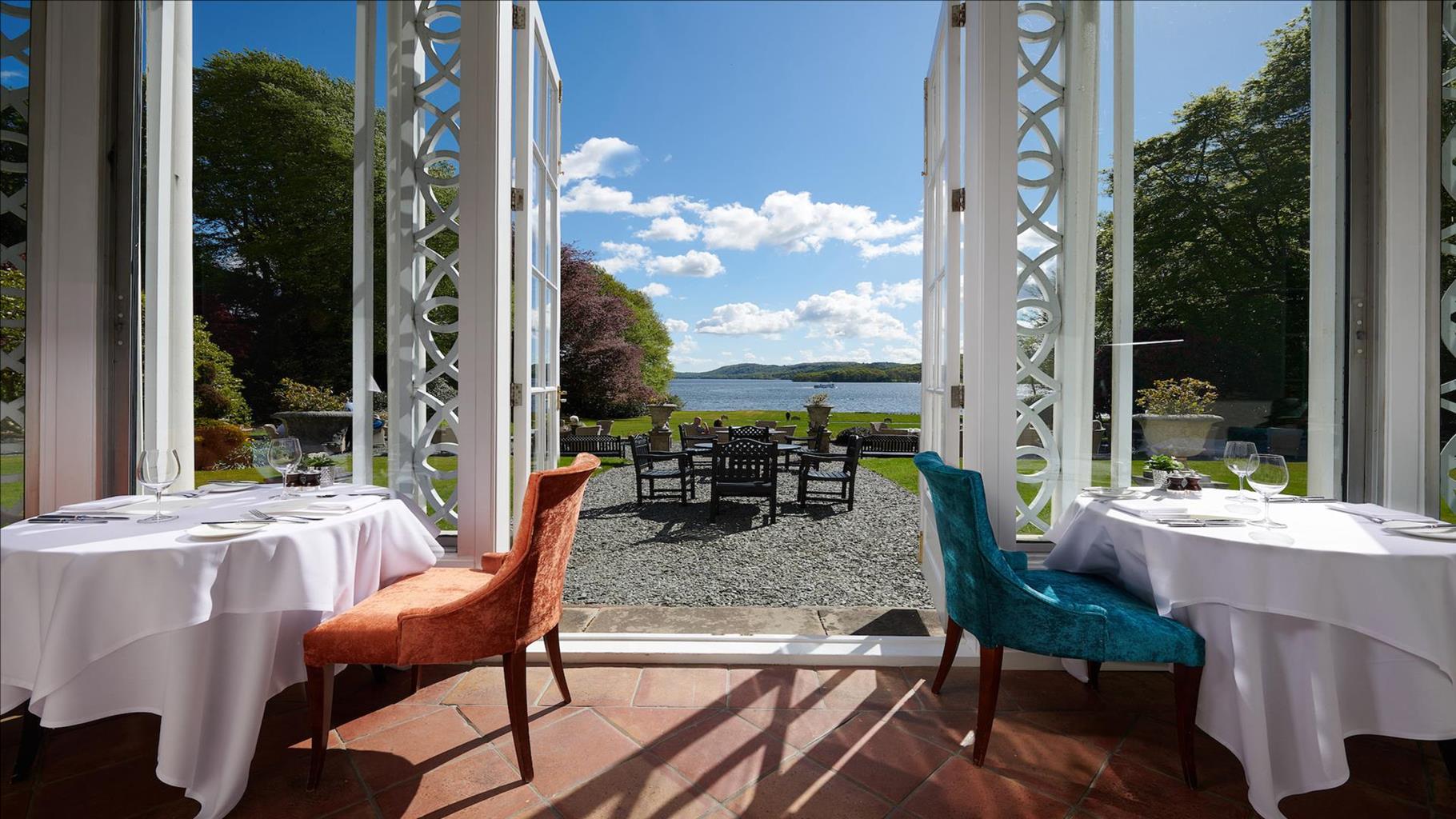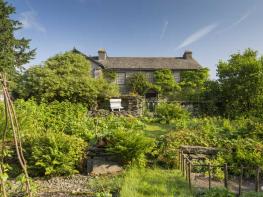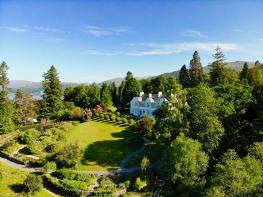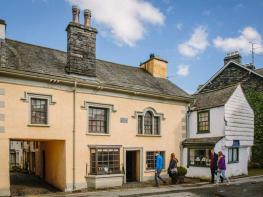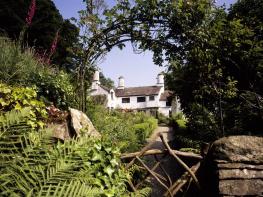Burnside Park luxury self-catering accommodation is at the heart of the English Lake District.…
Brant Fell above Bowness-on-Windermere

The breathtaking views over Windermere contrast markedly with the bustle below.
3.5 miles (5.7kms)
About the walk
Walking from the honeypot of Bowness-on-Windermere on a busy summer weekend, it is hard to imagine that just above the lakeside bustle there is a world of quiet solitude and space. With relatively little effort, however, you can crest the heights of Brant Fell and enjoy a wonderful, lonely view out over Windermere to the Coniston fells, the Langdale Pikes and the mighty Fairfield.
Bowness-on-Windermere
Fed by the high rainfall of the Lake District fells, via the rivers Brathay, Rothay and Troutbeck, Windermere is England’s largest natural lake, stretching some 10.5 miles (16.9km) from Waterhead to Lakeside. It is up to 0.9 miles (1.45km) wide in places, and reaches a depth of 220ft (67m), so its ice-scoured bed is well below sea level. Overlooked by this walk, the privately owned Belle Isle is said to have been used since Roman times. Today this island is supplied by a little boat, which serves the 38-acre (15ha) estate. Belle Isle’s interesting circular house, restored after extensive fire damage in 1996, was originally erected by Mr English in 1774. Apparently William Wordsworth credited Mr English with the honour of being the first man to settle in the Lake District for the sake of the scenery. There have been many more since. The main gateway and access point to the lake, Bowness-on-Windermere, is the most popular holiday destination in the Lake District. More than 10,000 boats are registered on the lake. Once the Oxenholme–Kendal–Windermere railway opened in 1847 the town developed rapidly. Windermere town grew around the station from what was once a small village called Birthwaite. The railway company named the station Windermere to attract trade, although it is some distance from the lake. In the late 19th century wealthy businessmen, principally from industrial towns in Lancashire, built luxurious residences overlooking the lake. Many of these are now hotels, while Brockhole is now the National Park Visitor Centre and Blackwell is owned by the Lakeland Arts Trust and open for visitors. The Belsfield Hotel, overlooking Bowness Bay, was bought in 1860 by Henry Schneider, the chairman of the prosperous Barrow Steelworks and Shipworks. Reputedly he left home each morning and boarded his steam yacht Esperance, taking breakfast whilst travelling down the lake to Lakeside. He then journeyed by steam train – he owned the railway and had his own private carriage – to the works in Barrow.
Walk directions
Take Glebe Road into Bowness town. Swing left to follow the main Windermere road, crossing opposite the steamer pier. Opposite the impressive St Martin’s Church, turn right to ascend the little street of St Martin’s Hill. Cross the Kendal road to climb Brantfell Road directly above. At the head of the road a little iron gate leads on to the Dales Way, a grassy and stony path that climbs directly up the hillside. Continue to a kissing gate by the wood, leading onto a lane.
Pass through the kissing gate and turn right, signposted ‘Post Knott’, to follow the stony lane. Continue on the lane rising through the woods until it crests a height near the flat, circular top of Post Knott. Bear left and make the short ascent to the summit. The view from here was once exceptional but is now obscured by trees. Retrace a few steps towards the track, bearing left to find a kissing gate leading out of the wood onto the open hillside.
Beyond the kissing gate take the wide path to a bench on a rocky shoulder. Bear left, and first descend, then ascend to a gate in the corner below a gap in the trees. Cross the stile, then bear right to ascend directly up the open grassy flanks of Brant Fell to its rocky summit.
Go left from the summit, then look for a line of cairns. Follow these down to a kissing gate. Descend through a plantation to a second gate and a track. Turn right and follow the track to a stile. Turn left down to a road, then left along it. Keep left at the next junction. Immediately beyond Matson Ground house and farm is a kissing gate on the left, waymarked for the Dales Way.
Go through the kissing gate and continue down the path to cross a track via two kissing gates. Keep along the path beneath trees and beside a pond, until the path swings left to emerge through a kissing gate onto a surfaced drive. Go right along the drive for 30yds (27m) until the path veers off left through the trees to follow the fence. An iron gate leads into a field. Follow the grassy path, first descending and then rising to an iron kissing gate in the corner of the field. Continue to another gate leading into a walled track. Cross the surfaced drive of Brantfell Farm and keep straight on to a gate leading into a field. Follow the path alongside the wall, descending the hill to intercept a track, via a kissing gate, coming again to Point 2. Retrace your steps back to Glebe Road.
Additional information
Pavement, road, stony tracks, grassy paths, several stiles
Town, mixed woodland, open fell, lake and fell views
Popular route for dogs; busy roads and sheep grazing, so must be under control
OS Explorer OL7 The English Lakes (SE)
Car park on Glebe Road above Windermere lake
Near information centre at end of Glebe Road
WALKING IN SAFETY
Read our tips to look after yourself and the environment when following this walk.
Find out more
Also in the area
About the area
Discover Cumbria
Cumbria's rugged yet beautiful landscape is best known for the Lake District National Park that sits within its boundaries. It’s famous for Lake Windermere, England’s largest lake, and Derwent Water, ‘Queen of the English Lakes'. This beautiful countryside once inspired William Wordsworth and his home, Dove Cottage, in Grasmere is a popular museum. Another place of literary pilgrimage is Hill Top, home of Beatrix Potter, located near Windermere. Tom Kitten, Samuel Whiskers and Jemima Puddleduck were all created here.
Much of Cumbria is often overlooked in favour of the Lake Distirct. In the south, the Lune Valley remains as lovely as it was when Turner painted it. The coast is also a secret gem. With its wide cobbled streets, spacious green and views of the Solway Firth, Silloth is a fine Victorian seaside resort. Other towns along this coastline include Whitehaven, Workington and Maryport. Carlisle is well worth a look – once a Roman camp, its red-brick cathedral dates back to the early 12th century and its 11th-century castle was built by William Rufus.
Nearby stays
Restaurants and Pubs
Nearby experiences
Recommended things to do
Why choose Rated Trips?
Your trusted guide to rated places across the UK
The best coverage
Discover more than 15,000 professionally rated places to stay, eat and visit from across the UK and Ireland.
Quality assured
Choose a place to stay safe in the knowledge that it has been expertly assessed by trained assessors.
Plan your next trip
Search by location or the type of place you're visiting to find your next ideal holiday experience.
Travel inspiration
Read our articles, city guides and recommended things to do for inspiration. We're here to help you explore the UK.




